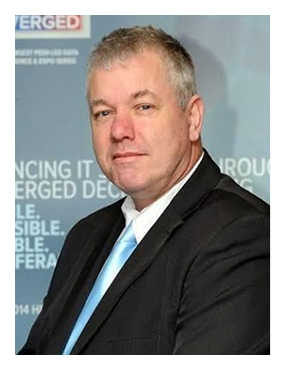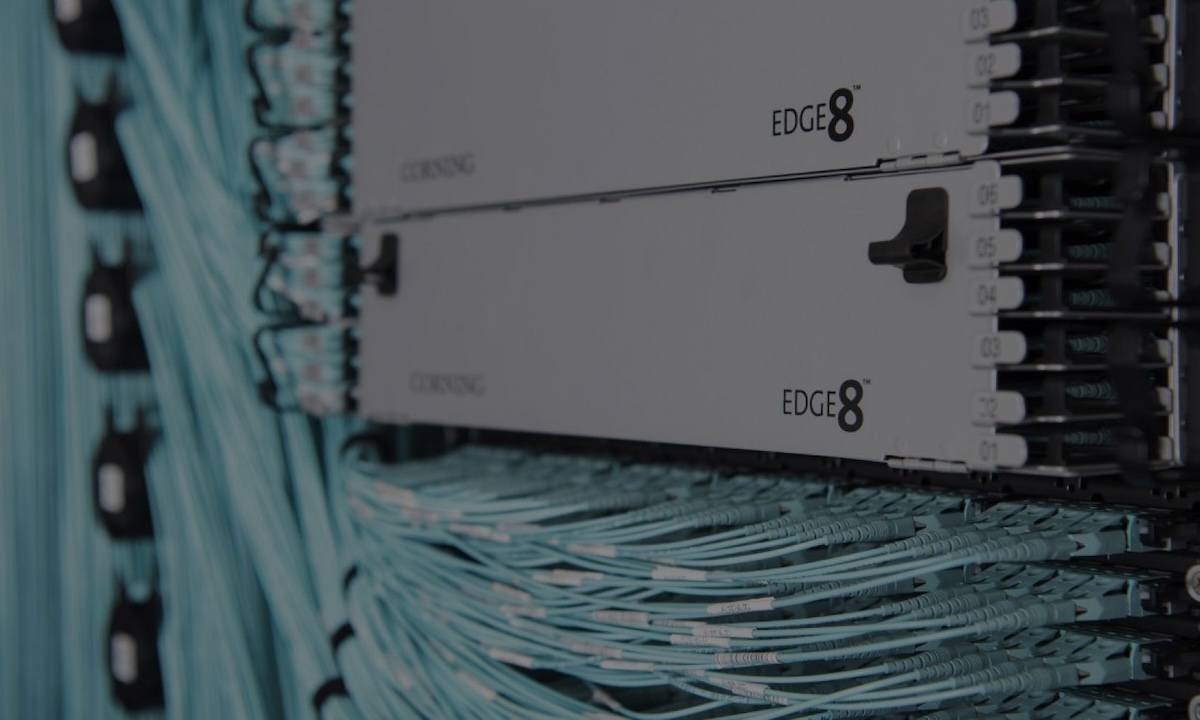Kevin Hussey describes one of his key roles as Vice President, Data Center at Corning Optical Communications, as looking at the various needs of different regions around the world and ensuring that Corning can provide the right resources to meet those needs.
As with many suppliers into the data centre industry, Corning is experiencing very strong growth. He sees this as due to “this intersection of trends with the core competency we have – that is, fibre cable connectivity.” Corning’s status in this sector as a well-established market leader earns the company, according to Hussey, “the opportunity to sit at the table.” It has also enabled the company to apply its resource capital and human ingenuity “to deliver a very unique set of solutions that can really help the customer scale.”
Hussey considers that fibre network requirements have expanded far beyond what anybody would have anticipated. If the base network infrastructure was put in place 15, 20 or 30 years ago that would make the next steps much simpler. He gives the example of work Corning is doing in the United States with Lumen Technologies “where one of their predecessor companies made a wise decision many years ago to add a significant number of conduits along the pathways that they were building at the time, 95% of those weren’t being used then, but are now due to new demand including AI opportunities.”
The level of growth has impacted the requirements for connectivity based on AI back-end networks and it is also impacting the physical profile of the network infrastructure. “The fibre requirement now is about 10 times what our traditional front-end cloud network looks like. Each new GPU generation is driving about a 4-fold increase in fibre density requirements, and so that is forcing us, with our customers, to develop smaller fibres, smaller connectors, to invest in automation and manufacturing processes to ensure that we can deliver that volume of fibre at that scale, as these GPU iterations scale up.”
This leads Hussey to the consideration that there is a far greater risk in under-provisioning for fibre than there is for over provisioning: “as a start point you should scenario plan as though the fibre requirements are only going to increase exponentially, which we believe they are.”
Changing Customer Needs
He also stresses the focus in his role on customer experience and describes his global team as a group of people who are “talking to customers every day”, not just in terms of sales but in the development and deployment of engineering solutions and technologies.
The approach to customers is determined also by the common set of key requirements across projects – the need for speed and for density, and also for sustainability.
“Speed and density seem to be the two themes we hear the most about now. And so the solution sets that we’re bringing to market right now tend to address those two things, whether it’s new fibres, new connectors, new cables, ultimately, new hardware that all these piece parts plug into, is really where a lot of the innovation takes place.”
He also mentions labour challenges as a problem that customers are facing. This in part has led to the development of a set of solutions which are pre-terminated for speed of installation and also to “take some of the pressure off the trade who would otherwise need to be handling fibres, potentially doing splicing in the field, things like that.”
A ‘plug and play’ environment doesn’t necessarily require the same level of skill and training within the trades that traditional solutions did. So Corning’s focus is really on both fronts – on the solution set that enables faster deployment and also helps solve the labour challenge by doing more termination in the factory than the field. The company also continues to invest in preparing and training integrators and contractors on-site, inside the data centre every day.
Delivering Innovation
He sees innovation as a key factor in Corning’s market profile. “It’s a very fortunate and privileged position that we enjoy, and one that we talk about regularly, and it’s a responsibility to continue to deliver innovation to the markets we serve,” he said.
Hussey nominates two key forms of innovation in the cabling sector – innovation of product development and innovation in manufacturing at scale on the basis of standardising maybe millions of times. He points out also the innovation in each of the ‘building blocks’, at the fibre level, at the connector level, at the cabling level as well as innovation in the hardware that brings all those pieces together.
The ‘building block’ approach he sees as appropriate for a global customer base: “the problem in region A may be different than the problem in region B – you may be solving a labour channel problem in one market and facing a speed or density challenge in another. So, having a solution set that does both of those makes you much more attractive to different customers.”
The Future
The future is to some extent unpredictable as indicated by the recent past: “I think at the beginning the speed of the scale up wasn’t something anyone necessarily saw coming”.
According to Hussey, Corning is preparing for a future geared to increasing levels of growth, firstly in the IT load which many data centres are carrying, based on advances in GPU technology. “We see the GPU technology ramping up at such a such a rapid rate, our challenge has been working with customers who are thinking about multiple GPU vendors or multiple GPU iterations, and ensuring that we’ve got the architectures, cabling, guides to meet that,” he said. This situation ultimately sees Corning acting in a consulting role to customers and the development of solutions that enhance the bandwidth and latency within the data centre, moving towards fibre to the chip. This requires new types of fibre – multi core fibres, hollow core fibres and the deployment of these solutions at scale.
Trends towards smaller form factors are also impacting connectors “You have MMC connectors, you have EBO connectors, there’s a whole host of very small form factor connectors. That may have started at 12 fibres or 24 fibres, that will eventually go much higher than that. The ability to terminate those in an automated fashion at scale will also be important,” he said.
Therefore on one hand there is a trend towards higher densities, and on the other the trend towards smaller form factors and the equipment that will connect them: “I think it will behoove the industry to have a set of building block products, regardless of GPU technology that you’re deploying, that enable you to do so at scale and solving each of those problems, each of those challenges we talked about, speed, density, labour, whatever the case is.”
However the increasing speed with which new GPU upgrades are introduced means that a flexible base infrastructure that can be upgraded quickly and easily is very important But this creates something of an industry challenge: “The ability to enhance the density of your network will be a critical piece as you plan. I think we need to think very strategically globally about how we’re going to interconnect all these data centre campuses. When we started this, we were talking about 1,000 GPUs, then 10,000 and obviously now we’re in the hundreds of 1,000s.”
The principle of the campus means that it also can be open-ended in terms of expansion: “a three to five building campus today that might expand 10 or 15 buildings, and so the power plant and obviously the fibre to support that are critical considerations at the front end.”
An Australian Focus
A number of the new connectivity technologies, particularly the new fibre technologies, may be particularly relevant to Australia as they enable data centre operators to connect data centre campuses at much further distances than they traditionally could and still operate as a ‘single brain’. To achieve this very much requires investment in the ‘middle mile’ in long haul infrastructure.
As an endnote, Hussey emphasises Corning’s commitment to investing to deliver solutions that meet strongly increasing connectivity requirements: “We’re investing very heavily now in deploying capital at a very rapid clip to try to stay ahead of this. I will say that our customers, at times, are surprised at the level of expansion that they’re experiencing, and so I think it’s forced an entire industry to be much more nimble to bring much more scale to bear quickly.”
 Author Nick Parfitt, who sadly passed away earlier this year, had over 15 years of experience in the IT and data centre industry, where he led and contributed to numerous research initiatives, authored industry papers and delivered insights across global and regional platforms. His work spanned research, survey design and execution, data analysis, and content development for broadcasts, seminars, and conferences throughout the Asia-Pacific region.
Author Nick Parfitt, who sadly passed away earlier this year, had over 15 years of experience in the IT and data centre industry, where he led and contributed to numerous research initiatives, authored industry papers and delivered insights across global and regional platforms. His work spanned research, survey design and execution, data analysis, and content development for broadcasts, seminars, and conferences throughout the Asia-Pacific region.
Over the course of his career, Nick completed more than 200 ad hoc research projects and authored over 50 papers. Between 2011 and 2016, he designed and executed several global surveys of the data centre industry, followed by the APAC Data Center Surveys in 2018 and 2019. His analyses have supported industry conferences and strategic discussions across the Asia Pacific region.
Nick’s key publications include Global Data Center Markets & Forecasts, which provides market-by-market insights and growth analysis across 40 markets. He has also written extensively on the evolving role of service data centres – including Planning Priorities for the State of the Art Colocation Facility and Co-opting the Cloud for Future Growth. His broader work covered data centre skills development, Brexit impacts, hub city profiles (Singapore and Hong Kong), the future of data centre construction and the digital transformation of multi-tenant data centres (MTDCs).

